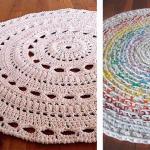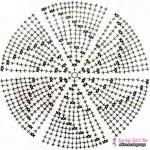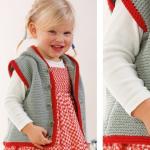What is the Arabic costume for men called? Arabic clothing
For most Arab men and women, national costumes are still relevant. Oriental outfits are distinguished by practicality, originality, diversity, and luxury. Traditional Arab clothing almost completely hides the body. Initially, Arab clothing was supposed to serve as protection from the sun and sand, and then these functions passed into the tradition of Islam and became a symbol of the lifestyle of a religious person.
Women's Arab outerwear - galabaya - a bright, colored cotton dress with embroidery and appliqués. This oriental outfit is long, loose-fitting and without a belt. The choice of color of clothing of Arab women speaks about the character of the owner. Dark colors Oriental outfits are mainly preferred by older women. In most eastern women's outfits there is a contrast of the main color with the color of embroidery or appliqués. Women decorate oriental outfits for special occasions with lurex, metal threads, beads and rhinestones.
Men's oriental outfits are no less beautiful. Men's and women's Arab clothing has only slight differences. Oriental outfits are multi-layered. Upper men's Arab robe, worn over the top of the dshdasha - male version Galabaya - called abaya. Men's oriental attire - abaya - is usually black, brown, beige or cream. This oriental outfit is a long robe with wide long sleeves, without fasteners, sometimes there are decorative laces with tassels, and gold or silver braid serves as decoration.
Women's oriental attire - abaya - is traditionally black. The Moroccan abaya style is distinguished by a very wide cut - butterfly or bat. Sometimes these women's Arabic clothing is decorated with rhinestones or embroidery.
The headdress of Arab men - the arafatka - is now extremely popular all over the world and has come to us almost in its original form. A man's scarf holds an akal - a hoop - a double ring. This element of oriental attire protects from the sun and sand. Also a traditional part of men's Arab clothing is the skullcap, which is worn under a scarf or separately. Muslims are required to cover their heads during prayer. This element of oriental attire is decorated with embroidery, lurex or silk.
In women's oriental attire, the headdress is no less significant. It is called hijab or niqab. The main function of this element of clothing for Arab women was primarily protection from the sun. Because the bright light of the sun and the reflections of the sand can harm the eyes, and exposure to sunlight has a negative effect on the skin and hair.
Arab women love to dress up and always choose bright fabrics for their outfits. Arabic women's clothing- galabea - decorated with various embroideries, appliqués, coins, rhinestones, mother-of-pearl and even precious metals. And they wear a black abaya only in public places to emphasize their modesty and decency. Men's or women's Arab clothing is a work of art that is designed to delight others.
Appearance in in public places in sports or beachwear considered extremely indecent. Even on the beach it is forbidden to appear naked (swimwear)
etiquette behavior arabic business
Undoubtedly, the traditional clothing of the local population in the United Arab Emirates is directly influenced by religion, traditions and climatic features.
Emirati men wear a long dress white"kandura". White color for Arabs is the color of a noble person, and besides, especially in the heat, this color is very practical. In winter, kandura can be beige, sand and even light greenish colors.
On the head of Arab men is a knitted lace cap - “gafiya”, on top of which is a scarf “gutra” (white, milky or red checkered), tied in a special way, or simply held in place with a woolen cord-rim “ikal”.
Sometimes on the dress of a local Arab you can see a “kerkusha” - a kind of tassel decoration comparable to a tie. For special occasions such as wedding, big holidays or a visit to the sheikh, men use the “bisht” cape.
Under the kandura, men wear a "fanila" - an undershirt, and a belt - "wuzar" - is tied around the waist.
A man can change clothes 3-4 times a day, so you will never see an Emirati on the streets in a dirty or heavily wrinkled outfit. A man's wardrobe usually consists of more than 50 dresses. Of course, local residents usually resort to dry cleaning services and rarely wash their clothes at home, especially since dry cleaning in the UAE is very affordable.
The most popular shoes for men are leather flip-flops. IN winter time you can see men wearing shoes and even sweaters over a kandura.
Only when traveling abroad can UAE men wear a suit or other European clothing.
 Women's attire in the UAE is more layered. Traditionally, ladies wear colored dresses with long sleeves - “kanduras”. Under the dress they wear trousers - “sirval”. A black cape is worn over the dress - “abaya”, often embroidered with gold, silver, decorated with crystals or pearls. Often, by the high cost of decoration and fabric, one can judge the well-being of a woman’s husband.
Women's attire in the UAE is more layered. Traditionally, ladies wear colored dresses with long sleeves - “kanduras”. Under the dress they wear trousers - “sirval”. A black cape is worn over the dress - “abaya”, often embroidered with gold, silver, decorated with crystals or pearls. Often, by the high cost of decoration and fabric, one can judge the well-being of a woman’s husband.
An Emirati woman's head is covered with a thin black scarf called "shellah", which covers the head, but not the face. This is the most common headdress in the Emirates.
The head covering called “hijab” is less commonly used in UAE clothing by local women; it is worn more by natives of neighboring Gulf countries. The hijab consists of two pieces of fabric and covers a woman's hair.
 Women from deeply traditional families (especially those of Bedouin origin) may cover their heads with the so-called “burqa”. It comes in two types. The first is a scarf that covers the entire head and face except the eyes. The second type of burka is a special design made of metal plates that covers part of the forehead, nose and lips. But women wearing burkas are becoming less and less common in the UAE.
Women from deeply traditional families (especially those of Bedouin origin) may cover their heads with the so-called “burqa”. It comes in two types. The first is a scarf that covers the entire head and face except the eyes. The second type of burka is a special design made of metal plates that covers part of the forehead, nose and lips. But women wearing burkas are becoming less and less common in the UAE.
Another common headdress for women is the “gishva”. This is a thin translucent scarf that covers the entire head and face. It is dense enough to hide the lady from prying eyes, but at the same time transparent enough for its owner to see the world around her.
Of course, the choice of headdress for clothing is often determined by what family the woman is from and how democratic her husband is.
 Often, under an abaya, instead of a traditional dress, you can find a completely modern outfit from a famous European couturier. In addition, following global trends, women buy expensive bags and shoes of famous brands.
Often, under an abaya, instead of a traditional dress, you can find a completely modern outfit from a famous European couturier. In addition, following global trends, women buy expensive bags and shoes of famous brands.
There are legends that most of the dresses from high fashion shows go to the Emirates, where women show them off to each other at weddings and bachelorette parties, proving their spouse’s wealth and their status in the family.
In addition, UAE women traditionally use a large number of jewelry, prices for which are sometimes comparable to the cost of housing or a car. This is a kind of manifesto of a man’s generosity.
There are several versions of why Arab women wear black. According to one version, a woman is a shadow of a man, which is why the robe is black. Some sources say that black the best way hides the subtleties of a woman's figure, and will not show through if it gets wet. According to another version, white is a working color, and black is a festive color, and since Emirati women do not work, they always have a holiday. In addition, it is believed that Eastern people associate black color with beauty: black eyes symbolize a beloved woman, a black heart - loving heart. Oddly enough, the color of mourning for Arab women is blue.
The Gulf countries or Arab Gulf states are names that refer to countries such as Bahrain, Kuwait, Saudi Arabia, the Sultanate of Oman, Qatar and the United Arab Emirates. These states are members of the Gulf Cooperation Council (GCC). The union was founded in 1981 as the Gulf Cooperation Council (GCC). Yemen is another state located on the Arabian Peninsula. This state is not a member of the union, but the possibility of joining is currently being discussed.
All Gulf countries share a common regional culture, also called "Gulf culture". The rich culture of the Arabian Peninsula has developed over the centuries. Many customs and traditions were inherited from the Bedouin culture that dominated the Arab peninsula. A common religion, language, similar styles of music and worldview determined the development of Arab culture. Arabic traditions are also reflected in the national clothing of the Gulf states. It combines three incompatible features: modesty, practicality and sophistication.
Traditional Arabic clothing is usually long and covers almost all parts of the body. This is due to the cultural and climatic characteristics of the region. The human body requires protection from the scorching sun. In general, traditional clothing is quite similar throughout the Persian Gulf. Such men's clothing, such as a long dress (kandura), keffiyeh, gutrah and women's clothing such as abaya and hijab are typical for most Arab countries.
However, there are differences in each individual part of the region. Because of this, each state has its own code of clothing rules. Currently, due to modern realities, clothing traditions in the Gulf countries are undergoing some changes. All these factors turn Arab culture into a unique combination of centuries-old traditions and modern innovations.
In this review we would like to dwell in more detail on the features national clothes countries of the Arabian Peninsula.
United Arab Emirates
Both men and women wear Long Dresses, which are called, respectively, kandura and abaya.
Kandura (also dishdasha) represents men's dress toe length. It usually has long sleeves. Abaya is a loose, robe-like dress with long sleeves and floor length. It covers the entire body except the face, legs and arms. Today, for reasons of convenience, fitted abayas are becoming more and more popular. Sometimes the collar and sleeves are decorated with bright embroidery.
Keffiyeh is a cotton scarf that protects from the hot sun. Typically, this men's headdress is white, but this is not a requirement in other countries. Ikal is a black cord that prevents the keffiyeh from slipping off the head. Children wear both red and white keffiyehs without iqal.
Hijab is a woman's headscarf that covers the neck and part of the head. The niqab is another type of headscarf worn to cover the mouth and nose, leaving only the eyes visible.
Nowadays, some clothing items used in Western culture are becoming more and more popular among young people. However, Emiratis respect their traditions, and the same is expected of visitors and expats. Therefore, you should take care of your appearance so as not to violate established rules of decency.
Saudi Arabia
Saudi Arabia is famous for its strict laws in terms of clothing. The local way of life, influenced by religion and customs, requires uniformity of clothing. All citizens must wear formal clothing.
IN Saudi Arabia, unlike the UAE, kandura, or the so-called “national clothing of the Wahhabis,” is worn by both men and women. Women also wear sirwal (cotton or silk trousers) under the kandura due to the excessively hot weather conditions. Sometimes, according to special occasions, men wear long cloaks over the kandura, which are called bisht or mishlakh. They are mostly white, brown or black in color and are usually framed with gold fabric. Abaya is a piece of women's clothing that must be worn in public places. It covers the entire body except the face. Wearing an abaya in Saudi Arabia is also mandatory for foreign women.
The men's headdress consists of a skullcap, gutra and iqal. A skullcap is a small headdress, usually white, worn over a gutra, a cotton scarf wrapped around the head. Ikal is a double black cord fastened around the gutra. Sometimes pious people do not wear iqal.
All women, with the exception of foreigners, must wear a boshiya and niqab covering the face. The boshiya is a black veil that covers the lower part of the face, while the niqab is a veil that covers the entire face.
Bahrain
The traditional clothing of Bahrain is very similar to that of Saudi Arabia due to their shared history and geographical location.
The kandura is the traditional dress for men, while women wear the abaya. Therefore, the kandura, unlike in Saudi Arabia, is worn only by men. The male population of Bahrain, just like in Saudi Arabia, wears a bisht over a kandura on special occasions. Women usually wear abayas along with a hijab, a black veil that covers the face.
The traditional headdress for men consists of the gutrah, keffiyeh and iqal. Ghutra is a red and white checkered scarf worn over a white keffiyeh. knitted hat. And the iqal, a thick black cord, serves to hold the gutra in place.
Qatar
Qatari clothing has undergone dramatic changes over the past few decades. However, it has retained its traditional character.
Today, the male population of Qatar does not wear kanduras or bishtas. A typical men's suit consists of a long-sleeved shirt, loose trousers, and a gutra, which is secured with an ikal.
Women's clothing remains more traditional. Qatari women always wear abayas and cover their hair with a sheila. Sometimes women also wear a burqa, completely covering their face. However, this is not mandatory.
The formal style in Qatar differs from the traditional one, as men may not wear any head coverings, while women may wear long dresses with sleeves no longer than the elbows and a modest neckline.
There are no strict rules for foreigners, but modest, classic clothing should still be worn.
Kuwait
Kuwait is known for its rich culture and centuries-old history. The national clothing of Kuwait has its own characteristics.
Dishdasha represents men's bathrobe with long sleeves and floor length. Unlike the kandura, it is fastened with buttons from the neck to the waist and has long side pockets. Men usually wear light cotton trousers under dishdasha.
The Kuwaiti traditional headdress is almost no different from that generally accepted throughout the Arabian Peninsula. Gafya is a tight-fitting headdress worn over the gutra. White gutras are usually worn in summer and red and white checkered gutras are worn in winter. Ikal is a double black cord that holds the gutra on the head.
On the occasion of official events, men usually wear a bisht trimmed with gold thread over a dishdasha. It is made from fine cotton (for summer) or wool (for winter).
The traditional Kuwaiti dress covers the entire body and is called daraa'. Women generally do not wear the kandura in Kuwait, however it may be used on special occasions. Abaya is a common outerwear for daily use. Sometimes it is worn over the daraa'.
When it comes to headwear, today, Kuwaiti hijabs are available in many styles and a variety of colors. Sometimes women wear a burqa and boshiya to cover their entire face. Burqa (short black veil) leaves eyes open and forehead, while the boshiya (translucent veil) covers the entire face.
Yemen
Nowadays, due to the influence of Western culture, the male population of Yemen often wears suits, shirts and T-shirts. However, traditional Yemeni outfits are still popular.
Loose, toe-length kanduras are considered quite formal attire in Yemen. Kandura is commonly used in northern Yemen.
The national men's dress of Yemen is called futa. This is an informal style garment that is great for everyday wear. Mawaz is a traditional dress used at formal events. There is no mandatory requirement for him color range or type of cut, and it is very popular due to its comfort.
The most popular men's headdresses are the turban and alkavek. A turban is a long piece of cloth that is wrapped around the head. Alkavek can be worn over a turban or without it.
The traditional women's costume is called sanaani. This wide dress, sewn from a single cloth, is usually worn together with “al-momk” - a piece of fabric that covers the head. Zina is another traditional dress that is knee length, long sleeves and a pointed neckline.
Yemeni women usually cover their heads with various head coverings such as headscarves, hijabs, veils, etc.
The Arab people have a very long and ancient history. People living in Saudi Arabia, Egypt, Iran, Pakistan and many other countries have deep convictions, views, and beliefs that seem strange to Europeans. There are strong ideas about peace and religion in Arab hearts and souls. Along with this, the Muslim people have their own traditions, and one of these traditions is that women are required to wear black clothes.
All Arab women wear black
This is a deep misconception. Not all of them dressed and dress in black attire. Almost all colors are acceptable. But there are some shades that, according to Sharia, Muslim women are prohibited from wearing. She can wear clothes of any color, provided that she does not wear the so-called masculine color. A woman should also wear clothes that do not attract the gaze of the stronger sex. There are many representatives of the Arab Republic dressed in relatively variegated colors. This clothing characteristic of rural and Bedouin women. They wrap their heads very tightly, not worrying too much about their hairstyle. But city ladies brought black color into fashion. They abandoned such bright outfits. Green abayas (the clothing of Arab women) were and remain popular. These things look quite harmonious on them.Arab culture
As for Arab national clothing, it should hide female body completely, with the exception of the hands and feet. This outfit still has practical applications. In Arab countries it is very hot climate, therefore, the role of this clothing was to protect from scorching sun rays, as well as protection from dust and sand. That is why we can safely say that the clothing of Arab women has not only a religious bias, but also a practical one. Many years ago, artificially made face masks and scarves were placed over the face. Despite the fact that nowadays headdresses look much simpler, the headscarf for Arab ladies continues to be an integral part of the wardrobe. A Muslim woman is required to wear a veil, a traditional dress that dates back to Assyrian times. Walking with your head covered has always been considered a custom. In Arab countries this is regarded as a sign of submission. Female It is customary to wear a black abaya. This type of clothing was considered a virtue.So, as mentioned above, black women's clothing in Arab countries is a deep misconception. Women can dress very differently and brightly. It’s just that the living conditions in these latitudes forced women to walk this way.
"The most beautiful clothes the one in which everything comes together.” This saying of the medieval writer al-Sa'alibi, which corresponds to the understanding expressed in the Koran of beauty as useful and necessary for man, justifies the variety of shapes and colors that distinguished the Muslim costume of the era of the Arab Caliphate. During the period of the most daring and distant conquests of the 7th–8th centuries. The caliphate, which expanded the borders of the Islamic world to the Atlantic Ocean in the west and to the borders of the Indus in the east, united countries and peoples, sometimes deeply different in customs, tastes, habits, and manner of dressing.
The traditional Arab costume in the form of a loose, floor-length robe covering the entire body, complemented by a large headscarf or hood, was undoubtedly inherited from the ancient tribes of Arabia, Palestine and. Such clothing is perfectly suited to living conditions among treeless rocks or sandy deserts, where unbearable heat gives way to unbearable cold, and rapid sandstorms can dry out all living things.
During the reign of the caliphs from the Umayyad dynasty (661-750), who settled in ancient Damascus, the population of Syria, Palestine and Jordan dressed “in the old fashioned way”, preserving the usual types of clothing from Roman times. Basically it was various kinds tunics (shirts with short sleeves), chitons (sleeveless underdress, which was belted with a slouch), long toga capes.
The style of loose clothing common to the Muslim world, hiding the figure and giving it special significance, developed in parallel with the strengthening of the position of Islam and the formation of medieval Muslim etiquette. With the coming to power of the Abbasid dynasty (750-1258), the center of the state moved from Syria to Iraq, where the traditions of the Sassanids were still alive, which restored and developed the aesthetic ideals and artistic forms of the ancient Iranian Achaemenid Empire (VI-IV centuries BC) destroyed by the Parthians. e.).
The capital of the Abbasids - became a trendsetter. The brilliance and splendor of the Abbasid court, to which scientists, poets, philosophers, and skilled craftsmen flocked from all over the world, gave rise to legends. The idea of luxury was primarily associated with clothing. According to the 9th century. al-Mas "udi, Queen Zubaida, wife of Caliph Harun al-Rashid (786-809), “introduced dresses embroidered with jewels.” In the 9th-19th centuries, the art of dressing reached perfection. For centuries to come, the main features of the costume were determined Muslim and Muslim women.
A man's clothing usually consisted of an undershirt made of thin fabric with long narrow sleeves, worn over white cotton trousers with a lace, and a long, ankle-length, wide wrap-up khaftan (robe) with long sleeves, decorated with inserts of contrasting fabric with patterns on the forearm. or inscriptions. From the second half of the 9th century. A distinctive feature of the Arab caftan were voluminous sleeves three spans wide, which served as pocket bags; they were brought into fashion by the Abbasid caliph al-Musta'in (862-866). The caftan was usually tied with a belt made of silk or muslin. Many characters in the miniatures of the popular collection of picaresque stories, the Maqams of the Arab writer al-Hariri (1054-1122), are dressed in similar robes, which were eagerly copied and illustrated by calligraphers and miniaturists in Baghdad. In cold times, the outerwear was a jubba (hence the Russian fur coat) - a warm woolen garment like a caftan, lined with cotton wool. The most democratic type of male and female outerwear there was a wide, loose woolen cloak - aba, abaya or abaya. “You are unlikely to be happy with simple clothes, but you will be considered a fool without an abaya in winter,” wrote the Syrian poet Abul-Ala al-Ma’arri (973-1057).
A special type of clothing, known since the 8th century, was the khirka - a holey, patched woolen cloak, sewn from pieces of fabric, usually of blue color. Khirka was the symbolic clothing of the medieval Sufi or dervish, a sign of his renunciation of ordinary worldly life. ABOUT Since the time of the Caliphate, the clothing of pilgrims, both men and women, remains a special white robe - ihram, which they put on after achieving a state of ritual purity. Ihram consists of two pieces of fabric - the isar, which is wrapped around the hips, and the rida, which covers the shoulders and chest; women additionally cover themselves with a veil thrown over their heads. Pilgrims wear simple sandals as footwear – a sign of submission and humility. Shoes, like dresses, during the caliphate determined a person’s position in society. Yes, sandals on high heels were worn by slaves, and free townspeople wore morocco shoes with curved toes, and an extra pair of shoes was worn inside as socks.
The most common and important element of Arab-Muslim men's suit there was an “imama, now usually called by the Tatar word turban, or the French word - turban (from the Persian - dulbund). A long, scarf-like cloth was laid in coils over a small cap - taqiya, worn on a shaved head. The size of the canvas was calculated in such a way that “the imama could, if a Muslim died while on the road. According to Muslim traditions, the first to wear a turban was the prophet Adam; historians associate its origin with ancient Arabia. The religious and civil significance of this headdress is clearly expressed by the hadith: “The Imam embodies the dignity of believers and the power of the Arabs.” Special treatises by Islamic jurists were devoted to discussing the rules for the manufacture and use of Imams. For Muslims, the turban has become the main thing external sign belonging to a religious community (without an "imam it was unacceptable to visit mosques and graves or perform prayers). And Novverts were required to wear a turban of an officially established distinctive color: Christians - blue, Jews - yellow, fire worshipers - red."The imam also served as a sign of state power; it was worn when ascending the throne or taking office, and was included in a set of honorary clothing. Scientists usually wore a tailasan over a turban (or conical hat - kalansuva) - a piece of fabric in the form of a scarf, wrapped in such a way that one end went down to the chest, and the other to the back.
It differed from men's only in details, maintaining the general style principle of long, spacious clothing that envelops the entire body. The undershirt was shorter and wider, spacious trousers - shalwars, tied with a sling on the hips, gathered into many folds. The caftan, which reached almost to the floor, had slits on the sides and was girded with a shawl or a large patterned scarf. The head was covered with white muslin, embroidered with gold and shaped like a long scarf, the folded ends of which sometimes hung down to the ground. When going out into the street, a woman covered her face with an izar - a blanket made of linen or silk fabric. The upper end of the izar was pulled over the back of the head and secured with a cord on the forehead, while the entire panel, held in front by hands or secured with a clasp, fell over the back and sides, almost completely covering the figure. Diversity women's suit This was achieved not by changing the style, but by changing colors and decorations, the pomp or modesty of ornaments embroidered with silk, gold or silver.
When choosing a costume, great importance was attached to the texture and color of the fabrics. For example, in the 10th century. it was considered indecent for men to appear in public in a colorful dress, which was usually the clothing of slaves and commoners; The combination of silk and wool or linen and cotton in one suit was considered bad taste. White clothing was considered the most worthy for a man, but a woman usually dressed in white in case of divorce. In Muslim Spain, white was the color of mourning, although in most parts of the Muslim world, women's mourning clothes were blue. In the Abbasid Caliphate, the color was black in the 10th century. was the privilege of the courtiers, and in the 11th century. - distinguished the attire of imams-preachers and muezzins who gather believers for prayer. The green or black color of the caftan belt was a sign of kinship with the house of the Prophet Muhammad (peace and blessings be upon him).
In clothing, as in other areas of art, Muslim Arabs willingly and openly adopted elements and forms of costume from the conquered countries. For example, the type of high cone-shaped cap on wooden slats inside (to maintain shape) introduced into palace etiquette by the founder of Baghdad, Caliph al-Mansur, was borrowed from the eastern regions of the caliphate in the 60s of the 7th century. From the 9th century Similar high caps - akba - became a distinctive feature of judges - qadi.
Contacts of the medieval Arab world with the East and West (Turkic and Mongol conquests, crusading campaigns, trade with India, Italy, Spain) could not but influence the nature of official fashion and style, which were subject to the directives of the authorities. However, the general features of the Arab costume that developed during the era of the caliphate were steadily preserved among broad sections of the population, and in many countries they have survived to this day in traditional forms of national clothing.






